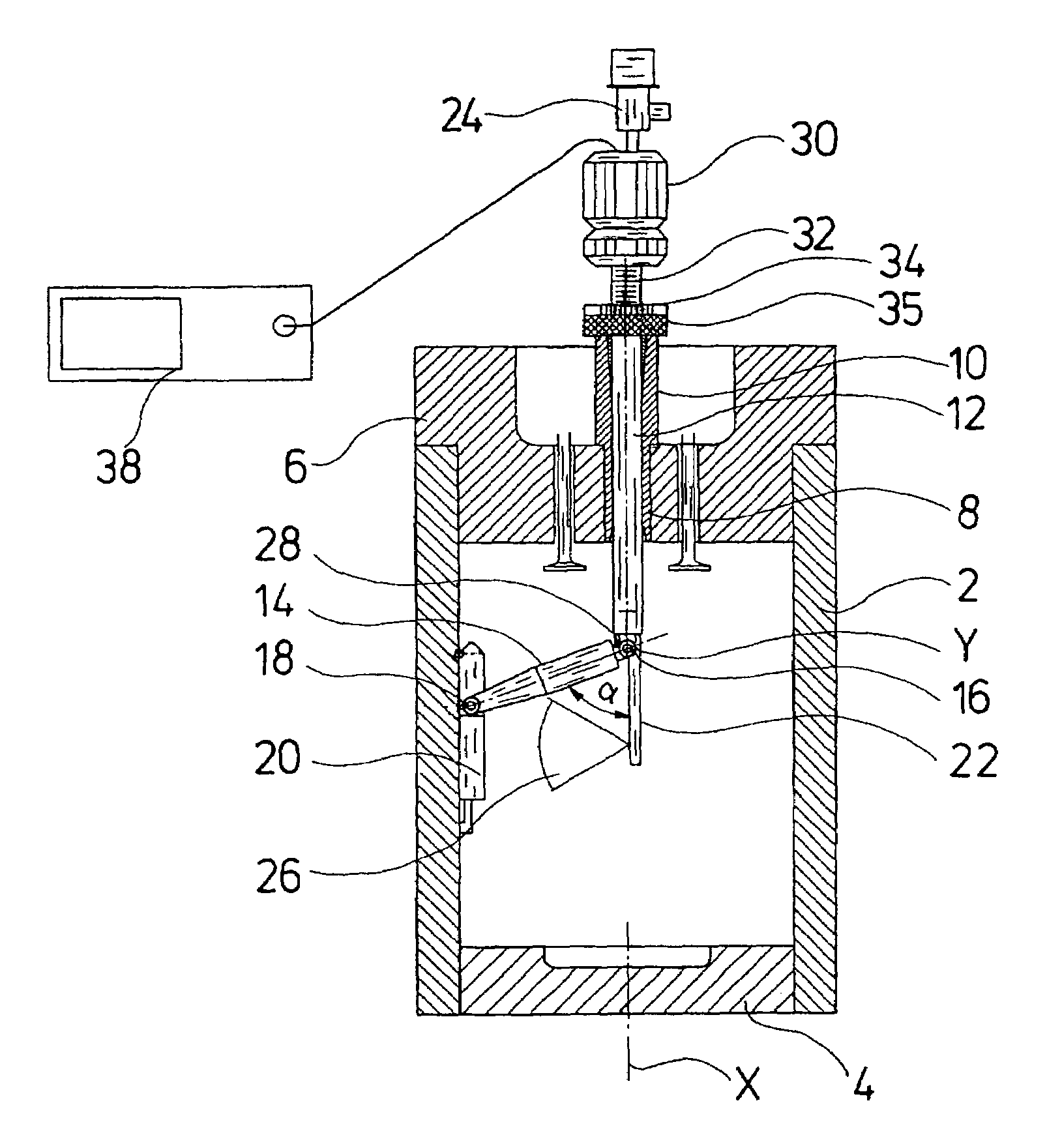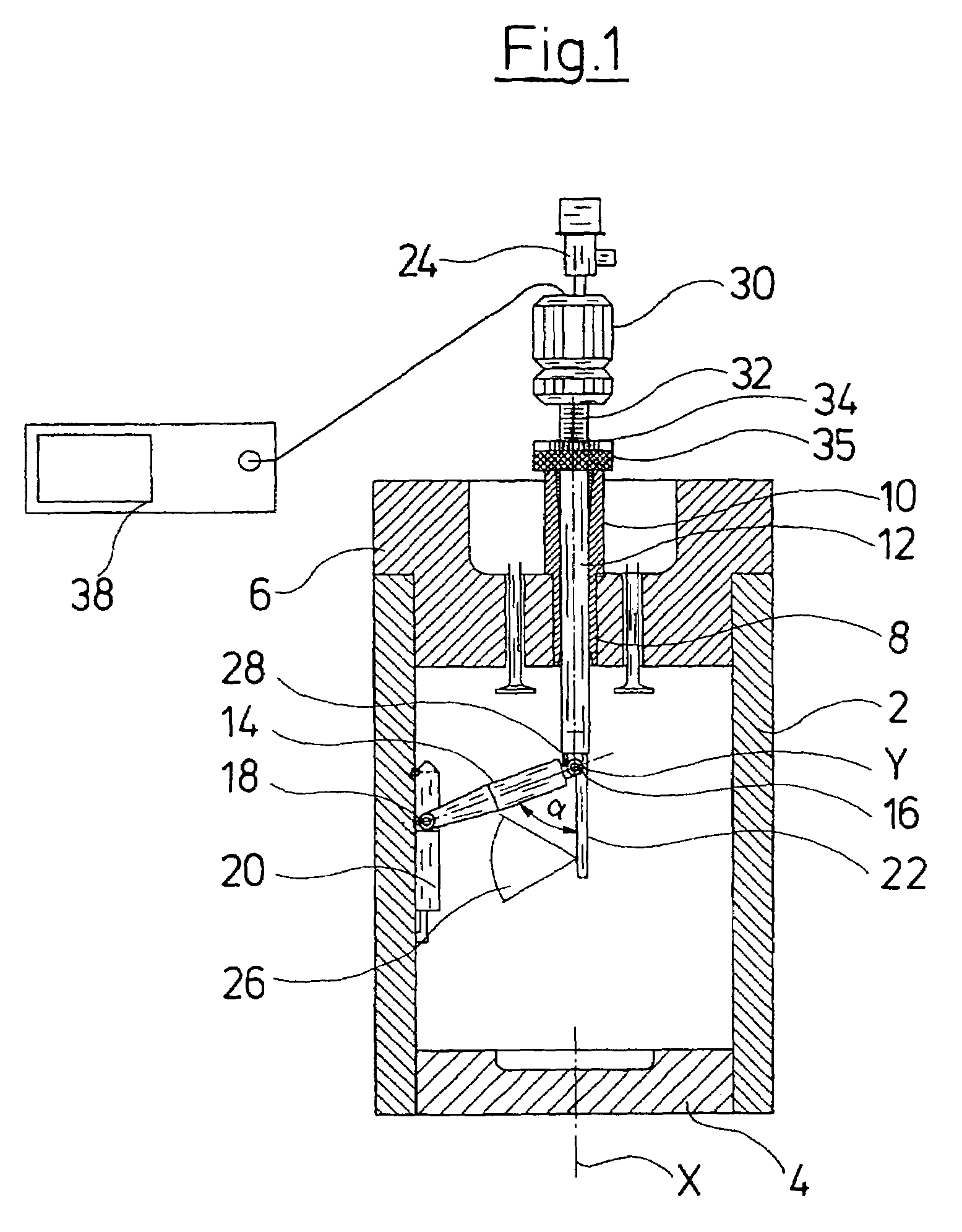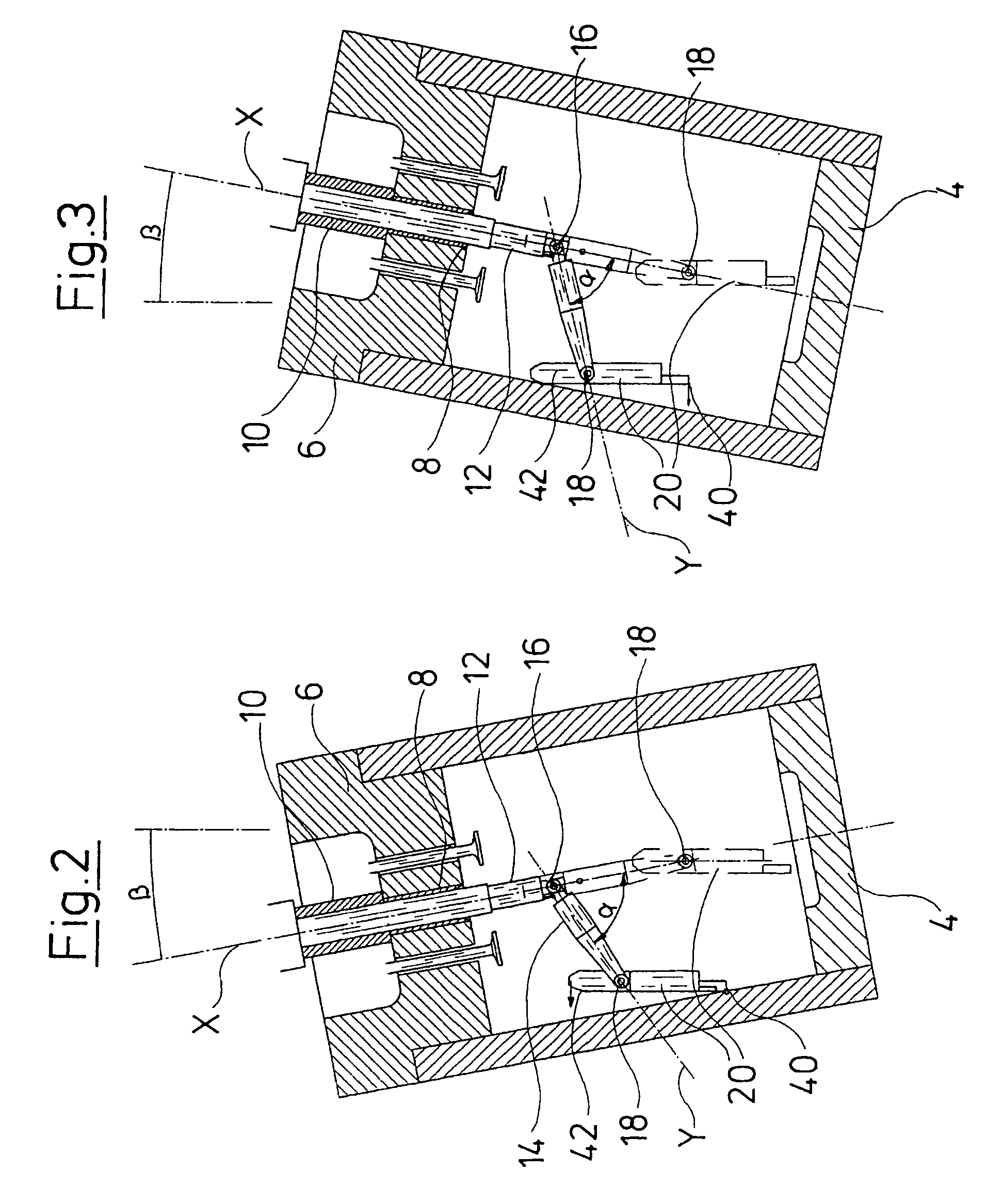Technoscope
- Summary
- Abstract
- Description
- Claims
- Application Information
AI Technical Summary
Benefits of technology
Problems solved by technology
Method used
Image
Examples
Embodiment Construction
[0030]FIG. 1 shows a section view of a cylinder 2 of a combustion motor, for example a ship's motor. On examination the piston 4 is preferably located at the lower dead center. A bore 8 is located in the cylinder head next to the inlet and outlet openings with the valves. The bore 8 is arranged centrally in the cylinder in the direction of the longitudinal axis X. In operation, the bore serves for accommodating the injection nozzle of the cylinder. The injection nozzle (not shown here) is screwed out for examining the inner space of the cylinder 2. A guide sleeve 10 is screwed into the bore 8 from which the injection nozzle is removed, and this sleeve has an outer thread corresponding to the inner thread in the bore 8. The shank 12 of the technoscope is inserted into the guide sleeve 10 of the technoscope from the proximal end of the guide sleeve 10. At the same time the shank 12 is introduced through the guide sleeve 10 from the outside into the inner space of the cylinder 2. An ar...
PUM
 Login to View More
Login to View More Abstract
Description
Claims
Application Information
 Login to View More
Login to View More - R&D
- Intellectual Property
- Life Sciences
- Materials
- Tech Scout
- Unparalleled Data Quality
- Higher Quality Content
- 60% Fewer Hallucinations
Browse by: Latest US Patents, China's latest patents, Technical Efficacy Thesaurus, Application Domain, Technology Topic, Popular Technical Reports.
© 2025 PatSnap. All rights reserved.Legal|Privacy policy|Modern Slavery Act Transparency Statement|Sitemap|About US| Contact US: help@patsnap.com



